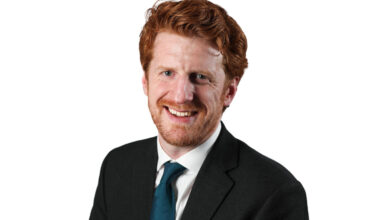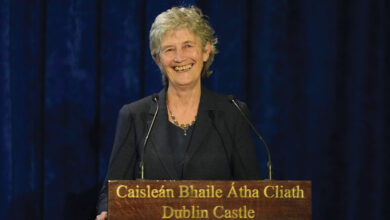The cost of delay

At present the UK is standing at the Brexit crossroads and faces some challenging decisions with the most far reaching one being should the UK leave the EU without a deal.
Over the past 12 months one of the most important responsibilities I’ve had when engaging with civil servants and politicians both home and abroad has been to outline just how important the all-island supply chain is to our local economy.
To clearly illustrate this, 70 per cent of freight transported from the South into the North is classed as Intermediate Goods which are ingredients and components we then use to complete making the goods we then export. If we end up with a fiscal and regulatory border, then we not only risk many of our exports becoming less financially competitive, but we risk their entire existence, highlighted in a recent report by the Northern Ireland Affairs Committee that concluded in the event of a no deal Brexit, there is a risk that local businesses will either fail or relocate to the Republic of Ireland.
This takes us to the impacts a no deal would have on physically moving goods across the border. By examining figures collated by Transport Infrastructure Ireland, who monitor vehicle traffic on roads across Ireland using under surface counters that can differentiate vehicles based on space between axles, we can analyse Goods Vehicle traffic flow on six of the 300 crossings.
On the 5 June 2019, a total number of 13,483 Goods Vehicles crossed the border on these six roads.
The A1/N1 between Belfast and Dublin is our busiest crossing that accounted for 8,390 of those vehicles and would be severely impacted if any friction was introduced. Southbound Goods Vehicle traffic volume for 5 June on this road was 4,022, which is averaging a lorry every 21 seconds. The average delay time for a lorry on the Norway-Sweden border is 10 minutes. Considering Norway is in the EU Single Market, it’s obvious this is a huge problem if we leave the EU without a deal.
Then we have to consider the impact of Sanitary and Phytosanitary controls (SPS) for goods of animal origin such as meat, poultry and dairy entering the EU if we leave without a deal. Around 33 per cent of Northern Ireland sales to the Republic of Ireland is agri-food, so if we take it that around 33 per cent of the 4,022 Goods Vehicles travelling South on the A1 daily are carrying agri-food then we face over 1,300 vehicles being subject to SPS controls. This would require all such vehicles stopping for documentation and vehicle checks as well as many loads requiring physical inspections.
During the morning peak time between 6am and 9am, around 347 Goods Vehicles would have to stop for SPS controls on the A1, that would be a lorry every 31 seconds.
These checks can last from 10 minutes to an hour or longer, therefore, if for whatever reason there were long delays for traffic for just an hour, we would see a queue of trucks stretching back for nearly 2km.
A no deal threatens paralysis at the border, delays and costs that will harm our economy hence why we need calm heads and pragmatic decision making by the Government.
Northern Ireland stands to lose most in the event of leaving without a deal as our regional business model is so highly integrated with that of the Republic.
So back to that crossroads we’re all standing at, many politicians say they don’t want a return to the border from our past, but it’s the potential border of the future that we need to be concerned about right now.
Seamus Leheny is Northern Ireland Policy Manager at the Freight Transport Association (FTA).




